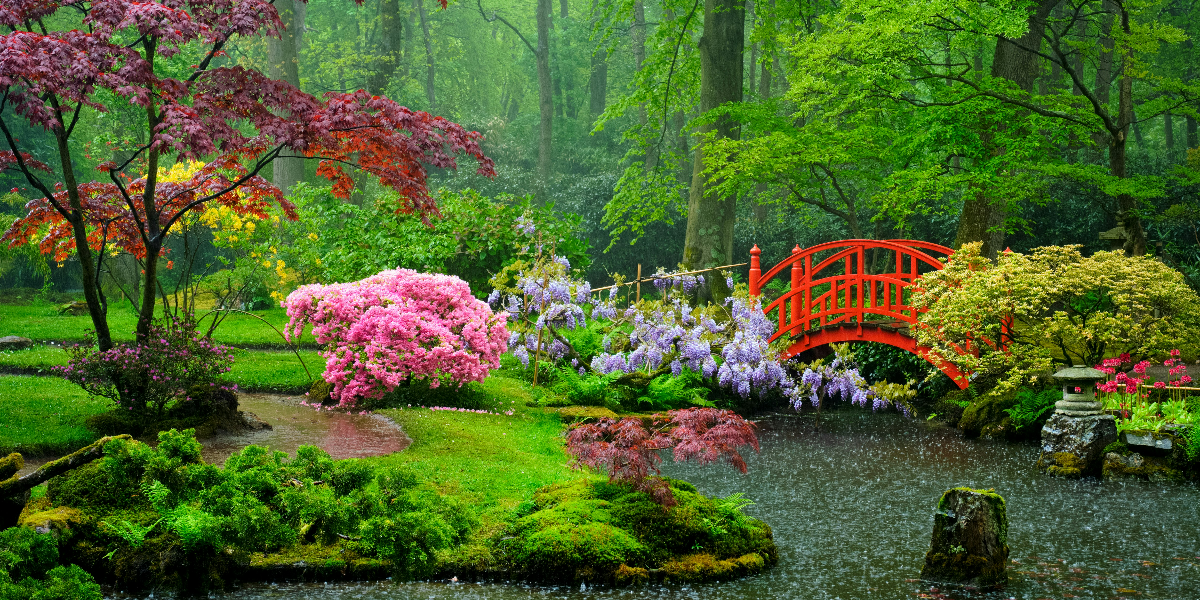Zen Outdoor Retreat: Simple Design Tips for Serenity
Creating a Zen outdoor retreat is about more than aesthetics—it is about cultivating peace, balance, and mindfulness in a natural setting. A well-designed Zen-inspired space allows the mind to relax, encouraging stillness and clarity. Rooted in ancient Japanese traditions, this approach to outdoor design prioritizes simplicity, natural materials, and intentional placement of elements to achieve harmony.
How can an outdoor space be transformed into a sanctuary for mindfulness and relaxation? The key lies in understanding Zen principles and incorporating elements that promote serenity.
What Defines a Zen Outdoor Retreat?
A Zen outdoor retreat embraces the philosophy of wabi-sabi, which appreciates the beauty of imperfection and impermanence. The design is meant to evoke a sense of calm through minimalism, natural balance, and soft transitions between elements. This approach avoids clutter, excessive ornamentation, or artificial materials that disrupt the organic flow of the space.
The placement of stone paths, water features, and carefully pruned greenery is deliberate, guiding visitors through an environment that invites stillness and contemplation. The goal is to create a setting where every detail contributes to a sense of tranquility and balance.
How Can Natural Elements Enhance a Zen Retreat?
A fundamental aspect of a Zen outdoor retreat is its connection to nature. Unlike traditional gardens that focus on decorative plants, this style encourages a harmonious blend of earth, water, and sky.
- Stone and Gravel: Natural stones are often used to create pathways, define borders, or symbolize mountains in a dry landscape. Gravel or sand may be raked into patterns, reflecting the movement of water or the passage of time.
- Water Features: The sound of trickling water brings a meditative quality to the space. A small pond, bamboo fountain, or stream can introduce a soothing auditory element that promotes relaxation.
- Greenery and Trees: Carefully selected plants add to the atmosphere without overwhelming the space. Evergreen shrubs, moss, and ornamental grasses offer a subtle yet effective way to integrate greenery without excessive maintenance.
- Wood and Bamboo: These materials provide warmth and authenticity to the environment. Whether used for fences, seating, or pathways, they reinforce the connection to nature while maintaining a minimalist aesthetic.
Each of these elements works together to balance textures, sounds, and colors in a way that supports stillness and contemplation.
What Role Does Minimalism Play in Zen Design?
Minimalism is at the heart of any Zen outdoor retreat. The philosophy is based on the idea that less is more, and that eliminating distractions allows for greater focus on the present moment.
Rather than filling the space with elaborate decorations, the emphasis is placed on empty space, subtle contrasts, and natural asymmetry. This concept, known as ma, allows for moments of visual and mental stillness, reducing stress and promoting clarity.
To achieve this effect, it is essential to:
- Keep the design uncluttered and open, allowing the landscape to breathe.
- Use neutral and earthy tones, avoiding bright, overpowering colors.
- Arrange elements in an organic, non-symmetrical layout that mimics the randomness of nature.
By simplifying the environment, the mind is naturally drawn into a state of calm and awareness.
How Can a Zen Space Encourage Mindfulness?
A Zen outdoor retreat is not just about aesthetics—it serves as a place for reflection, meditation, and presence. Incorporating areas designed for solitude and mindfulness enhances the overall experience.
- Seating Areas for Contemplation: A small bench, a flat stone, or a wooden platform placed in a quiet corner allows for stillness and observation.
- Walking Paths for Moving Meditation: A winding path encourages slow, intentional movement, creating an opportunity for deep breathing and mindfulness.
- A Simple Altar or Stone Arrangement: A focal point, such as a carefully placed statue or a stacked stone arrangement, provides a visual anchor for meditation and introspection.
The retreat should feel inviting and natural, offering a space where the mind can detach from distractions and focus on the present moment.
What Are Simple Ways to Create a Zen Retreat at Home?
Transforming an outdoor space into a Zen sanctuary does not require a complete overhaul. Even small changes can make a big impact in fostering peace and balance.
- Define the space with a gravel area or stepping stones to create a structured yet natural flow.
- Introduce natural sounds by adding a water feature or wind chimes made of bamboo.
- Use soft lighting such as lanterns or candles to create a warm, intimate ambiance.
- Limit decorative elements, focusing on a few key pieces that have meaning and contribute to the overall sense of harmony.
The transformation should be gradual and intentional, allowing for a deeper appreciation of the process.Why Does a Zen Outdoor Retreat Matter?
A well-designed Zen outdoor retreat is more than just a beautiful space—it is a refuge from stress, a place for mindfulness, and a connection to nature. It offers an escape from daily pressures, inviting moments of stillness and renewal.
By incorporating natural elements, minimalism, and mindfulness practices, anyone can create an outdoor sanctuary that supports peace and well-being.
Would a carefully curated Zen retreat make a difference in daily life? The answer lies in the experience itself—the quiet footsteps on a stone path, the soft murmur of flowing water, and the feeling of deep connection to the natural world.








